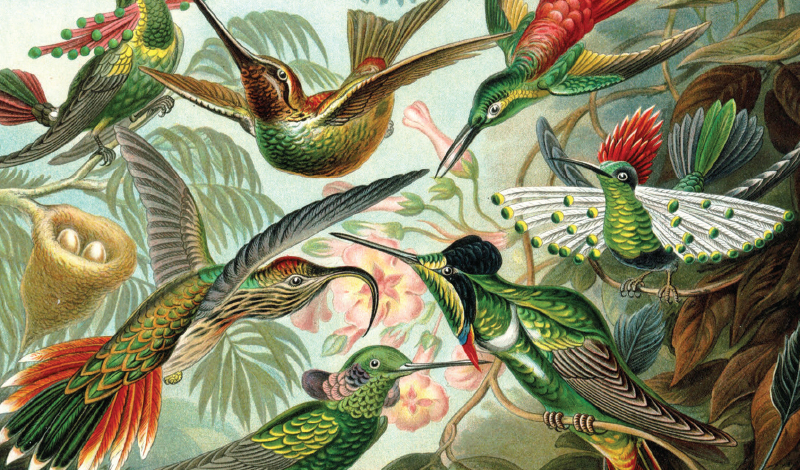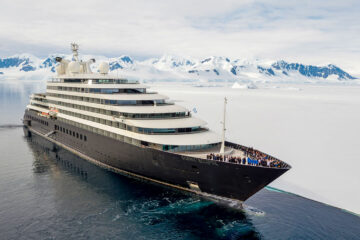Take a Walk on the Wild Side
The story of the emperor penguin and its relationship with modern humans is the story of the most intriguing love affair ever between people and birds.
How is it that we find some birds fascinating and others move us not at all? Jeremy Mynott, author of Birdscapes, has tried to come up with general criteria to answer this question. He distinguishes between “beautiful” birds and “charismatic” birds. In his opinion, birds such as pheasants, Canada geese and magpies may be beautiful, but they are not particularly charismatic. Barn owls, cranes and red kites, however, are near the top of his list of charmers. Rarity can also be a reason birds attract attention. Then there are penguins − proof positive that beauty, charisma and rarity are not the only characteristics that send bird enthusiasts into raptures. Penguins are appealing on so many levels: they do not look like a typical bird, their upright waddle positively invites us to imbue them with human characteristics and, last but not least, they make us smile.
The first human contact with “penguins” was somewhat confusing. Initially the name described the great auk, a bird that has since gone extinct. Like penguins, the great auk was an upright, black-and-white, flightless bird, but it lived only in the North Atlantic and was not even remotely related to the birds we know as penguins today. Of the 17 different species, the emperor and the Adélie embody the stereotypical penguin ideal, a tuxedoed caricature of a person that has mastered the art of walking upright more skilfully than Homo sapiens’s close relatives, the chimpanzees and gorillas. It was a theory about emperor penguin eggs that inspired Captain Scott’s ill-fated 1911 British Antarctic Expedition. Up until this time, the emperor penguin had been considered to be the most primitive bird on Earth. It was hoped that by studying the development of the embryo in the egg, scientists could discover not only the complete evolutionary history and origin of birds, but also their relationship to other vertebrates.
The story of the emperor penguin − one of three species of penguin that live only in Antarctica and its immediate vicinity − and its relationship with modern humans is the story of the most intriguing love affair ever between people and birds. Hardly any other bird (with the exception of owls, of which there are many different species spread across the world) provokes such a strong emotional response. Indeed, it may be the most beloved bird of all time, even though there is no single person who stands out as the archetypal “penguin nerd.” Quite simply, too many people feel this way about penguins.
Naturally, only a limited number of people are able to spend much time observing penguins in their natural environment. Watching thousands of birds walking across isolated, ice-covered wastelands is a privilege restricted to specialized researchers and a wealthy class of tourist, which is probably the main reason the penguin has entered the general consciousness as an almost mythical creature. In the French Oscar-winning documentary film March of the Penguins by Luc Jacquet (La marche de l’empereur, 2005), the life of the emperor penguin is presented as a parable for survival in a hostile environment. Fundamentalist Christians soon laid claim to the film and its message — above all because they embraced the penguins’ behaviour as a shining example of monogamy and thought their existence confirmed the theory of “intelligent design.” It strained credulity, they argued, to think that natural selection could ever have produced a bird that lived such an austere and challenging lifestyle. Adopting the penguins as mascots for their belief system inevitably sparked a heated debate.
In his 2007 documentary movie, Encounters at the End of the World, Werner Herzog interviewed scientists at the McMurdo Station in Antarctica, including penguin researcher David G. Ainley, who has been researching the connection between the size of penguin colonies and changes in the climate for nigh on 20 years.
It’s rather unsettling to see them searching for rocks to raise their nests higher and higher to keep their eggs from floating away. Actually, pretty disgusting, knowing that it’s we humans who have made their lives even more complex and tenuous.
In one of the most moving scenes in the film, an Adélie penguin distances itself from the other birds in its colony and feeding stations at the edge of the ice for no apparent reason. It is later seen walking farther inland in the direction of a mountain chain. When the bird was caught and brought back to the feeding station, it immediately set off once again in the same direction. It was facing 3,000 miles (5,000 kilometres) of Antarctica and walking not only into complete isolation but also toward certain death.
Excerpted from Birdmania: A Remarkable Passion for Birds by Bernd Brunner. Published October 21, 2017, by Greystone Books. Condensed and reproduced with permission from the publisher.
PHOTO courtesy of greystone books























































































No Comment